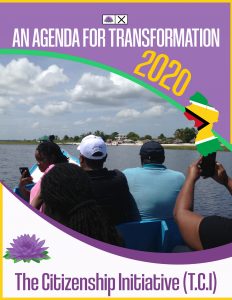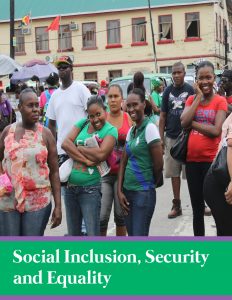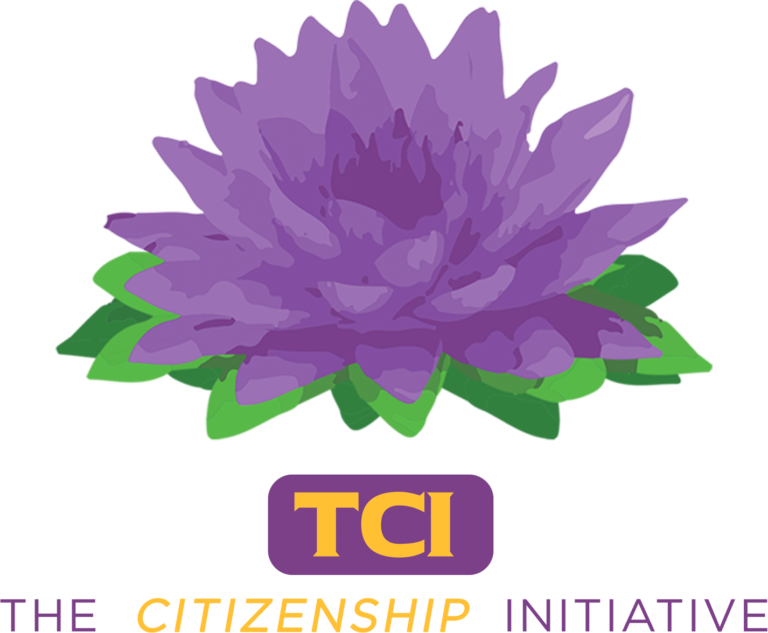Donate Online:
Cash App: $tciguyana
Zelle: donate@citizenship.gy
In Guyana: Please contact us
PILLAR - Social Inclusion, Security and Equality


Indigenous People
Indigenous people are our first peoples, our first citizens and should be recognized as such. Indigenous communities account for our most culturally strong, but often most socially vulnerable spaces. Our plans for indigenous communities can be categorized into five priority areas: political, cultural, social, economic, and environmental.
Political
We intend to establish a Ministry of Indigenous Affairs and Citizenship.
Within the Ministry structure, we intend to have a permanent advisor as nominated by the National Toshaos Council. That person will have direct inputs into government policy and programmes, both specific to the Indigenous Community and wider.
Under our programme for Youth Development and Leadership, we will be working with Indigenous communities directly in training indigenous young people for political participation at all levels, both village council, general local government and national. Under our plan for a bicameral legislature with direct constituency representation, someone like Lennox Shuman doesn’t have to go through the hurdles of the minimum six regions to get into parliament.
In Parliament itself, we intend to lobby for an Indigenous people’s caucus where issues affecting the community can be discussed in a bipartisan manner.
In the short term, we want to discuss with mechanisms like the NTC and the APA how to better empower toshaos and representatives of the Indigenous community. We’re talking about greater Indigenous representation, statutory or otherwise, on boards and commissions.
Cultural
Inextricably linked to indigenous citizenship is indigenous culture. We intend to engage in the meaningful, year round preservation, protection and promotion of Indigenous culture including the mainstreaming of indigenous language, cultural practices and architecture. Indigenous people will be providing leadership and management of programmes on cultural preservation in particular with technology used to record, stored and access intangible cultural heritage on site with backup at centralized servers in the region and the capital. Special attention will be paid to intellectual property protection for traditional knowledge.
Particularly on the issue of language, we commit to the further inclusion of early childhood bilingual education in all 9 languages. We intend to have indigenous language education as well offered as part of public service training with special certification in those languages leading to extra pay for public service workers on deployment in communities that speak the language a worker is certified in.
Social
The incidence of poor and inadequate social services infrastructure continues to disproportionately impact upon Indigenous communities. Special attention has to be paid to communities such as Baramita for example with its high incidence of social ills from substance abuse to suicide.
Our plans to upgrade and decentralize public health services, including the provision of mental health facilities in all ten regions, will positively impact indigenous communities. As a result of our mainstreaming of indigenous languages in the public service, there will be better, more accurate diagnosis of both mental and physical illness and hence better patient care.
Our early childhood bilingual education will provide much-needed equity in empowering young Indigenous people to be competitive in the education sector and as a result in the labour force, including providing training and programmatic leadership in our mainstreaming indigenous languages programme.
Economic
On the one hand, Indigenous peoples deserve an equal share in the economic pie, like all our citizens. This means control over their economic destiny as well as benefiting from the patrimony of the country in general and more directly from economic activities in the areas in which they live. Certainly, we see direct cash transfer from oil particularly to deal with social issues as critical.
On the other, indigenous communities also have the right to define development on their own terms and outside of economic parameters defined by mainstream culture. Critical to this self-determination is the issue of clarity in land titling and allocation for indigenous communities. We intend to come up with a clear-headed and practical solution to indigenous land issues that prioritizes four main areas and updates the Amerindian Act and all other relevant legislation to reflect same. Those areas are:
Domicile – assigning adequate living space for indigenous communities based on accurate as possible demographic growth projections over 50 years.
Economic activity – providing an exclusive economic zone surrounding or adjacent to communities for exploitation of natural resources, tourism, creative industry production.
Traditional activities area – providing extended areas, including on privately leased or government lands for traditional activities such as hunting or any transient indigenous ritual/religious activity.
Conservation zones – providing buffer zones around indigenous communities particularly sensitive to negative ecological and cultural impacts
Environmental
During a trip to one Indigenous community, one of our members encountered some young primary school girls on a pathway through and saw a small snake creeping towards them. He was about to kill it to protect the girls when one of them stopped him and told him that the snake was harmless and innocent and that if he killed it, someone would die.
According to Project COBRA, a Guiana Shield environmental initiative supported by the European Commission, “Culture and ecology are tightly interwoven in a complex dynamic that maintains the social-ecological system. For Indigenous community members, maintaining traditional practices also ensure that the environment is used in a sustainable way.”
We intend to ensure that indigenous knowledge and culture is complemented with strong scientific research in order rethink and enhance how we engage in environmental preservation, both in general and in particular in informing the conservation zones component of our indigenous land allocation plan. In addition to our plans to use ICT in preserving and transmitting FPIC data at source,
Shared Experiences
The indigenous communities of Guyana have a strong tradition of shared knowledge and shared work in community, a concept that forms the basis of our Republic Anniversary celebrations, Mashramani. We believe that that tradition should be expanded in Indigenous communities across Guyana, in a sharing of experiences, challenges and solutions. We intend to put forward a programme that uses technology and director visitor exchanges by young people to link indigenous communities in order for them to share challenges and successes in each category area: political, cultural, social, economic and environmental.
Give us a feedback on Indigenous People.
Rate this Policy.
Click on a star to rate it!
Average rating 4.3 / 5. Vote count: 6
No votes so far! Be the first to rate this post.
